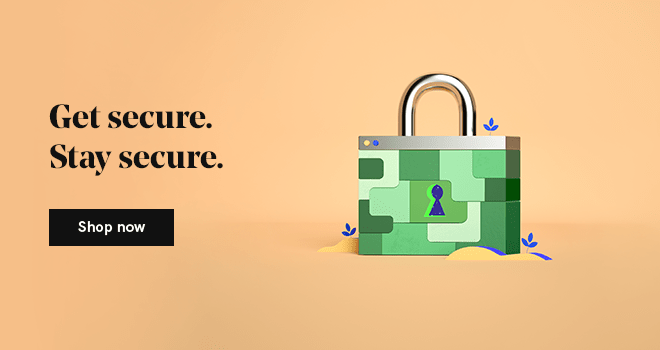It’s a bit of a Catch-22, isn’t it? You took the time to create an eye-catching, user-friendly personal website to house your writing portfolio. You posted your writing samples so potential clients can bask in your writing prowess and hire you to write something special for them.
But then a scary thought hits you: “What if someone steals my work?”
On one hand, you want to show the world you’re a credible and accomplished writer. On the other, posting your writing samples can open you up to potential word theft. Is there no way to have your literary cake and eat it too? To make sure you get those writing gigs you want, follow these tips to secure your online writing portfolio as a freelance writer.
Related: Get paid to write online with these 5 tips
5 ways to secure your online writing portfolio
You want your writing to be seen but not stolen, right? There are ways you can protect yourself from plagiarism.
-
Add a copyright notice.
-
Enable password protection.
-
Set up Google Alerts.
-
Talk with a lawyer.
-
Be proactive.
Before we get into the specific security measures you should take, there’s one thing you should always do before posting anything online: Get your client’s approval to share your work. Not everyone will want you to publicly share the content you created for them, whether it’s because of legal issues, competition or timing.
1. Add a copyright notice
First, a disclaimer: I’m not a lawyer, nor am I able to provide legal advice or counseling.
That said, one way to secure your online writing portfolio is to add a copyright notice. This is different from registering your content as copyright. Registering a copyright is a process and costs money, but adding a copyright notice is simple.
Some website platforms include a built-in copyright notice in the footer.
If yours doesn’t, you can inject a piece of code to add a copyright to the footer.
Now, if people really want to steal your work, a few sentences about how your samples are copyrighted won’t stop them. This is more of a safety net for you. By having a notice of copyright on your website, you clearly state that all of the work posted is yours and is not available to unwarranted replication or theft.
Related: How to copyright a blog and protect your content
2. Enable password protection
If you get most of your work through referrals and word-of-mouth, you might decide you don’t want your website to be public. If that’s the case, you can secure your online writing portfolio by incorporating password protection. There are a few options to consider:
General website password protection
This means that the only way users can view the contents of your website is if they have the password. This allows you to control who sees your content, which in most cases will be potential clients with whom you choose to share the login info.
Using a general website password is the safest way to ensure your content remains protected, but at the same time, this level of control also limits your audience. Weigh the options (protection versus organic site traffic) and decide what is best for you.
Related: 10 best practices for creating and securing stronger passwords
Category password protection
If you want a slightly more fluid level of protection, you can keep your website public and only use password protection to secure a certain category on your site.
Say, for example, you’re a freelance writer who specializes in writing screenplays. Posting an entire manuscript, or even a pilot, could leave your content vulnerable to idea theft. Even if your work isn’t stolen verbatim, someone could potentially read your ideas and tweak them. In cases like this, having password protection for an individual category could be extremely beneficial.
Individual posts password protection
Depending on what website platform you’re using, you can password protect individual posts. On WordPress, you can add password protection to individual posts or pages within your writing portfolio. Keep in mind, however, that each post would require the user to enter a password. Even if you use the same password for each post, the user would still need to type in the password to see each post — typing it in once wouldn’t give the person all-entry access.
Related: How to stay on top of WordPress security issues
Password protection is one of the best ways to secure your online writing portfolio as a freelance writer. However, adding password protection prevents people from being able to freely browse your work, which could cost you a new client. Weigh the pros and cons in order to choose the method that works best for your professional goals.
3. Set up Google Alerts
Another way to secure your online writing portfolio is to set up Google Alerts. Google Alerts sends you notifications based on the settings you choose.
Let’s say you have a piece you want to publish, and you want to keep it open to the public.
You can set up a Google Alert by choosing a search term you want Google to crawl the internet for.
Search terms are limited to 10 words, so choose a phrase that is unique to your writing style and unlikely to show up elsewhere on the web. Once you have specified your search terms, you can choose where you want your alerts to be emailed. Google will crawl the internet for your term and notify you if it shows up. This way you’ll know if someone tries to publish your content without your consent.
4. Talk with a lawyer
There are lawyers who specialize in copyright and infringement law. To protect yourself and your content, find one who can advise you on the steps to take before anything bad happens.
Related: Trademark vs. copyright: Which one does your business need?
5. Be proactive
Unfortunately, you can’t be 100-percent protected all of the time. If people want to steal your work, they will find a way. The best thing you can do is take the proper precautions to prevent (or at least make it more difficult) for others to steal your content. And put time on your calendar every month to do an overall diagnostic check of your website.
In the words of Ice Cube, “Check yo self before you wreck yo self.”
Editor’s note: Protect your website from the unexpected with GoDaddy’s Website Backup service, featuring automatic daily backups and one-click restore.
The above content should not be construed as legal advice. Always consult an attorney regarding your specific legal situation.









